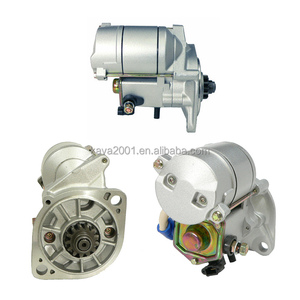
All categories
Featured selections
Trade Assurance
Buyer Central
Help Center
Get the app
Become a supplier

(810 products available)




































A motor starter cabinet is a combination of electrical components housed in a cabinet. It is used to control and protect electric motors. The starter inside the cabinet allows for stopping, starting, and controlling the speed of the electric motor. The starter also protects the motor from overload, short circuit, and phase failure. The motor starter cabinet is available in different types. They include:
Manual Motor Starter Cabinet
These motor starter cabinets are manually operated. They have buttons and switches that allow operators to control the motor manually. They are easy to use and simple to operate.
Magnetic Motor Starter Cabinet
These motor starter cabinets use electromagnets to control the motor. They are controlled indirectly using buttons, switches, or relays. They are suitable for applications that require frequent starting and stopping of motors.
Soft Starter Cabinets
These motor starter cabinets control the motor speed during startup. They reduce the voltage to the motor gradually. As a result, mechanical stress, energy consumption, and inrush current are reduced. They are ideal for applications that require high starting torque.
Variable Frequency Drive Motor Starter Cabinets
These motor starter cabinets control the speed and torque of the motor. They convert the fixed AC voltage to variable AC voltage. This allows the motor to run at different speeds. They are ideal for applications that require precise speed control.
Integrated Motor Control Centers
These motor starter cabinets combine motor starters and other control components in a single cabinet. They reduce the space needed for installation. They improve the reliability of the motor control system.
Explosion-Proof Motor Starter Cabinets
These motor starter cabinets are designed for applications in hazardous environments. The cabinets are sealed to prevent the entry of dust, moisture, and explosive gases. They are suitable for applications in mining, oil and gas, and chemical processing industries.
Motor control center cabinets are designed with a variety of specifications to meet different application needs. They include the following:
It is important to maintain motor starter cabinets to enhance their performance and also prolong their lifespan. Here are some motor starter cabinet maintenance tips.
Choosing the right motor control starter cabinet is an important decision for retailers. Here are some key factors to consider before purchasing a motor starter cabinet.
Manufacturers offer different types of motor starter cabinets. Each cabinet is designed for a specific use. Retailers should assess the needs of their target customers before purchasing.
Consider the size of the motor starter cabinet. A large motor starter is ideal for controlling big motors. Conversely, small cabinets are used to control small motors.
Evaluate the construction material of the motor starter cabinet. A cabinet made of stainless steel is corrosion and rust resistant. It will offer users a long service. Also, consider the location where the cabinet will be installed. If it is exposed to harsh environments, choose a starter with a higher NEMA or IP rating.
Check the electrical specifications of the motor starter cabinet. Ensure it matches the requirements of the target customers' motors. Look at the voltage ratings, current ratings, and power ratings.
Motor starter cabinets are available in different prices. Retailers should have a budget and look for starters that are affordable. However, they should avoid cheap starters with low quality.
Finally, purchase motor starter cabinets from reputable manufacturers. The cabinets should have warranty and after-sales services.
Replacing a motor control starter cabinet can be a complex task, but with the right tools and knowledge, it can be done. Here is a step-by-step guide on how to replace a motor starter control cabinet:
Q1. What is a motor starter cabinet used for?
A1. Motor starter cabinets are electrical cabinets that house motor control starters. They are used to control and manage the functions of electric motors. Typically, motor starter cabinets are utilized to start, stop, accelerate, or decelerate electric motors safely and efficiently.
Q2. Where are motor starter cabinets used?
A2. Motor starter cabinets are mainly used in industrial and commercial settings. They are utilized in various applications, such as water treatment plants, HVAC systems, conveyor systems, and manufacturing processes.
Q3. What are the components of a motor starter cabinet?
A3. A motor starter cabinet has a variety of components. These include motor control starters, overload relays, control circuits, and auxiliary contacts. Others are power supply components, signal lights, enclosures, and terminal blocks.
Q4. What is the difference between a motor starter cabinet and a motor control center?
A motor control center is a motor starter cabinet that is used to control the power of several motors. It is a centralized system that houses motor starters, control circuits, and power distribution in one assembly. Conversely, a motor starter cabinet is a standalone unit that houses a starter and control circuit for a single motor.